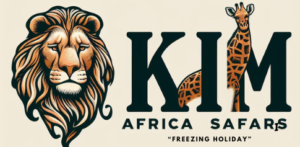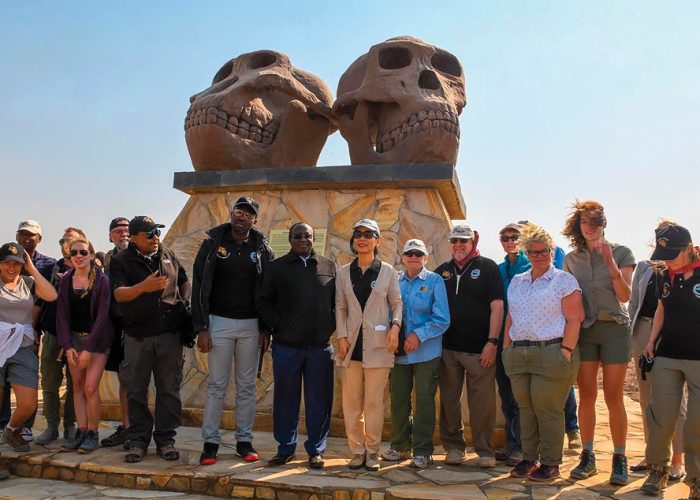



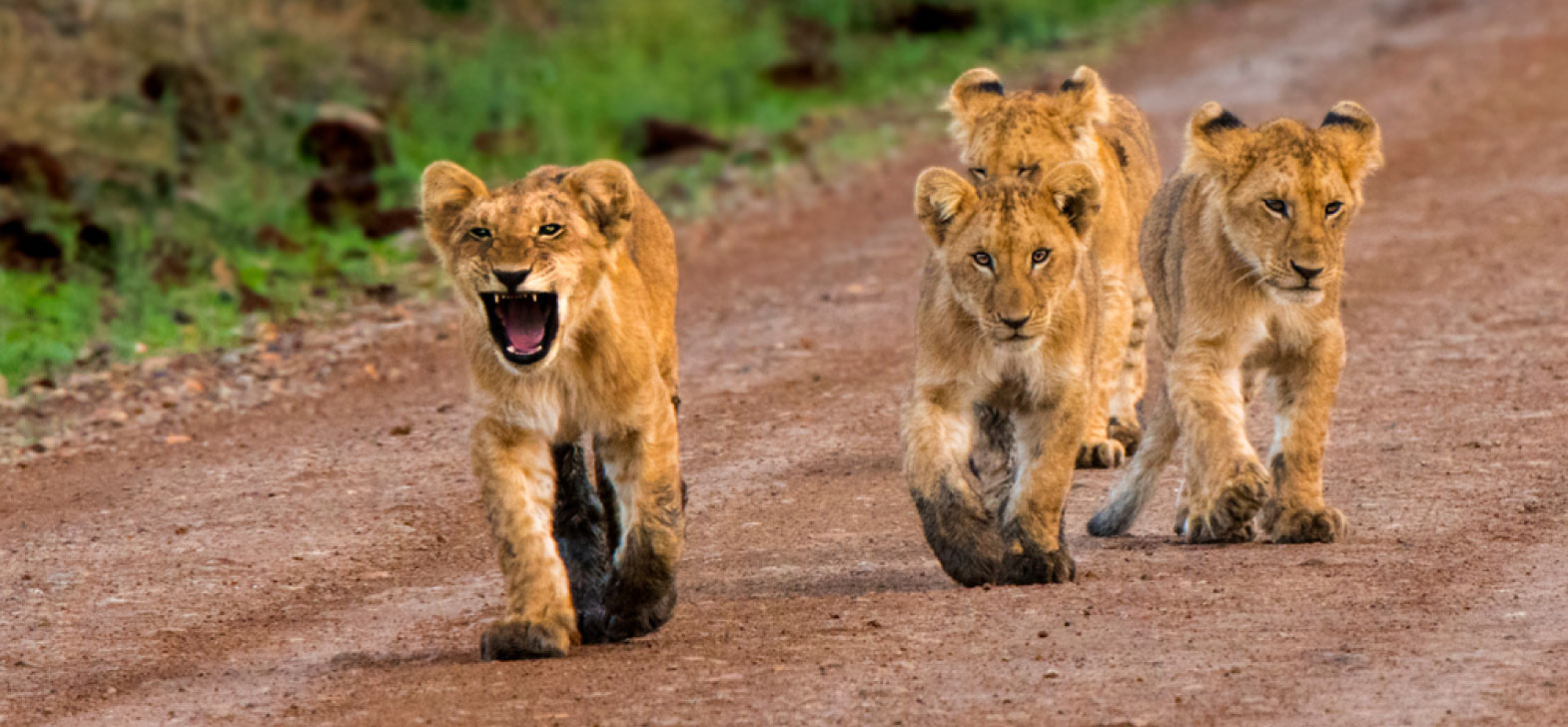
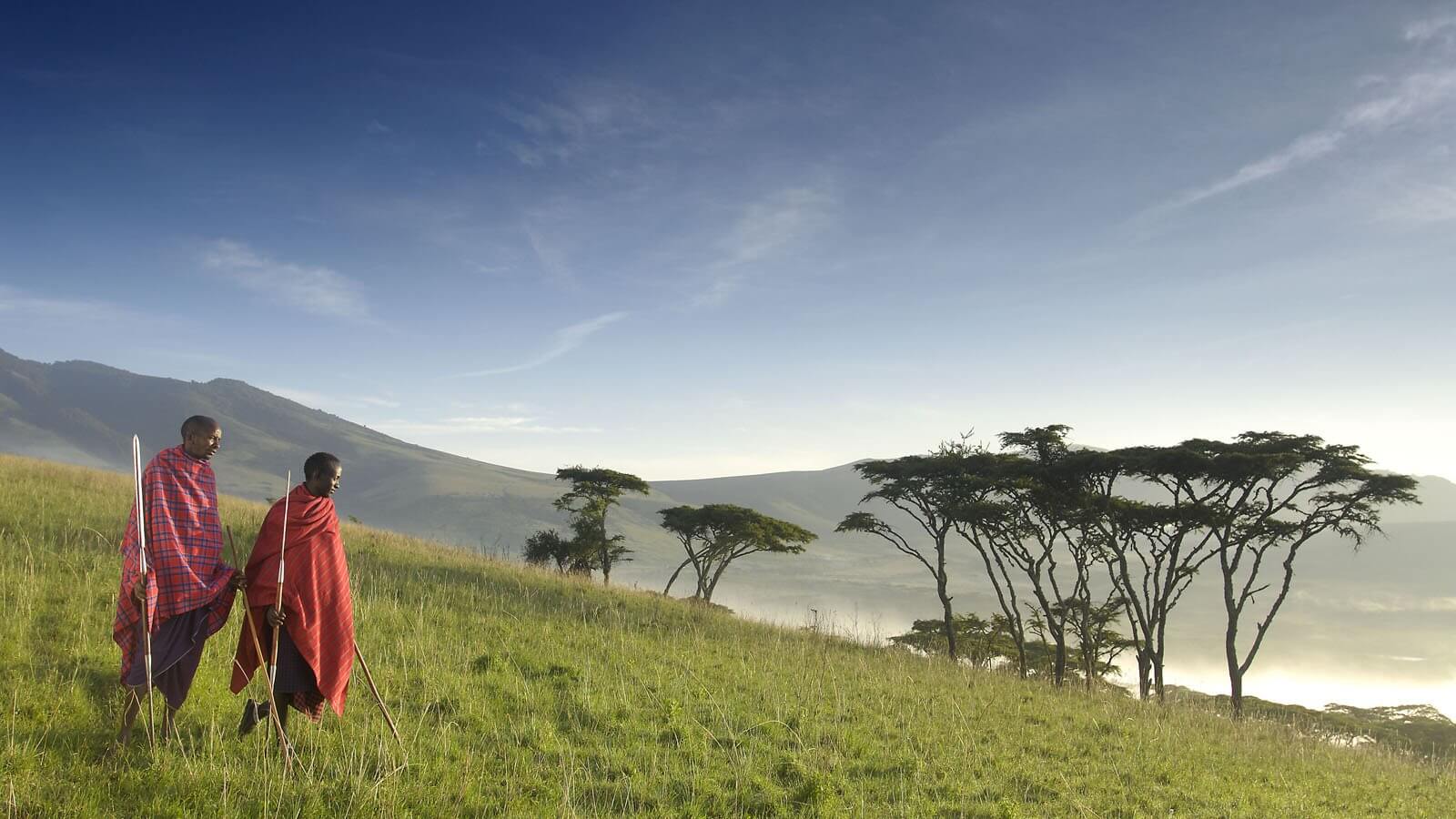


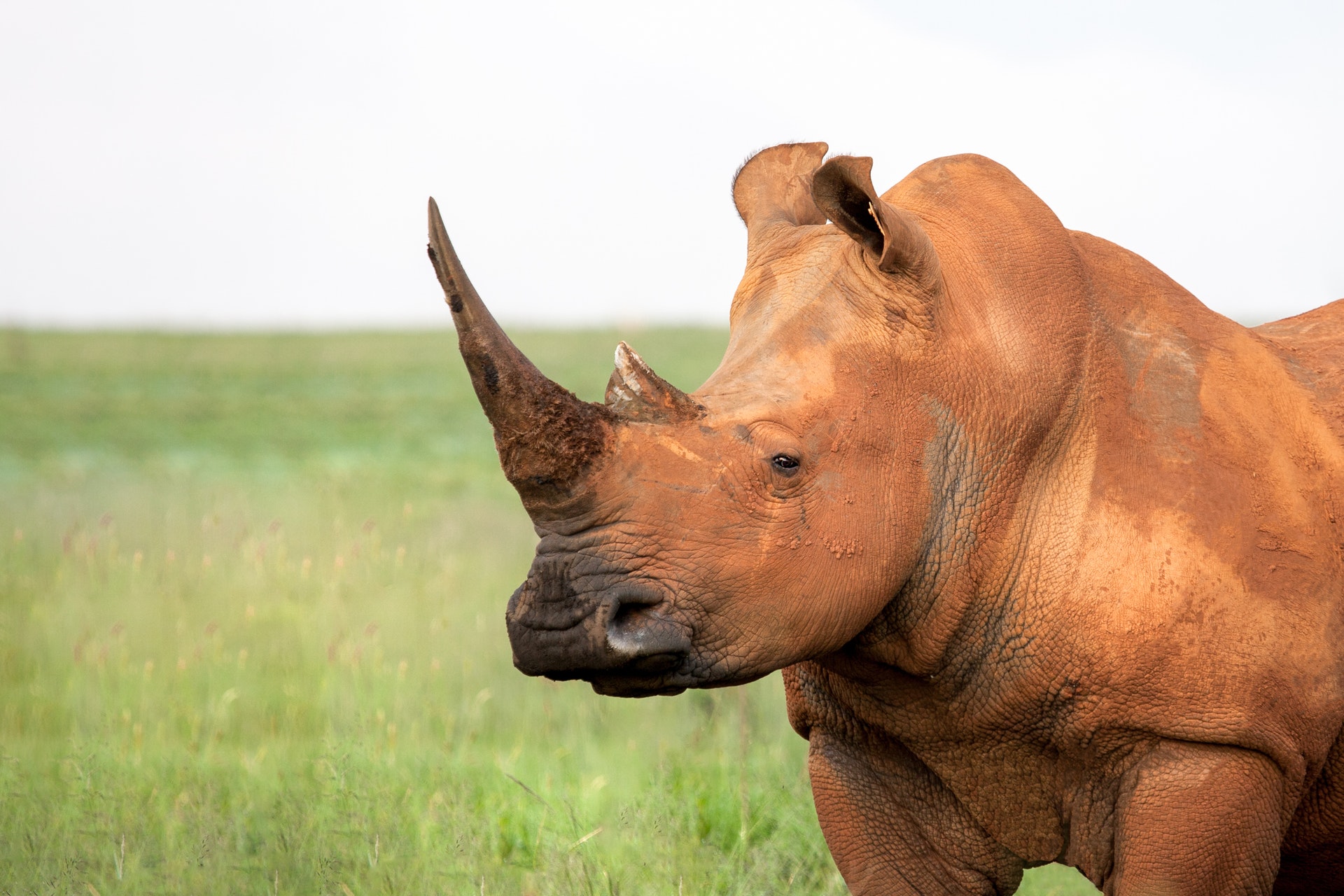
Rates
$450 to $3300
Best time
June to September (General wildlife viewing is best)
High season
July to March (The Seronera area is crowded)

the Ngorongoro
The good news is that you can enjoy breathtaking animal viewing at the Ngorongoro conservation area throughout the year, although the ideal time to go is during the dry season, which runs from late June to October.
Due to the crater’s sparse grass, it will be even simpler to identify.
Benefits Of Traveling To Ngorongoro In The Dry Season
- Because the grass is short, it is ideal for wildlife.
- Simple wildlife visibility and concealment.
- Getting together around watering holes increases the likelihood of seeing wildlife
- Game drives are simple on accessible routes.
- Best Predator action ever
- This time of year offers the best sunrises and sunsets.
Disadvantages during the rainy season
- Roads are slick and muddy, making access difficult.
- Long grasses hide wildlife.
- Rains lessen opportunities for wildlife photos and sightings.
Accommodation options in Ngorongoro
There are many lodging options available in the Ngorongoro conservation area, but which area of the park you choose to stay in will depend on your travel plans. For instance, it is appropriate for those who are viewing the calving migration in Ndoutu to stay at lodges or seasonal camps there, whereas it is better for people who are visiting the Ngorongoro crater to stay at the crater rim in order to enable an early drop into the crater.
Budget alternatives are confined to a few campsites, with Simba campsite being the most popular because it is located on the crater rim, even though there are several resorts and seasonal camps.
The temperature at night can drop to 6 to 12 degrees on the crater rim.
Camping Simba
Exactly on the crater rim, with a stunning crater view. Simba A campground is among the most interesting and stunning campgrounds in the nation.
Book your dream African safari today
There is hope in despair, light at the end of the tunnel, and love with Kanje grand tours Itineraries. Visiting Africa is a dream, a beautiful dream, a dream that many people share, and a dream that can be shuttered by fear. Fear of having an experience ruined, fear of not being treated with love, and fear of being defrauded.
Let's start planning
the attractions in Ngorongoro
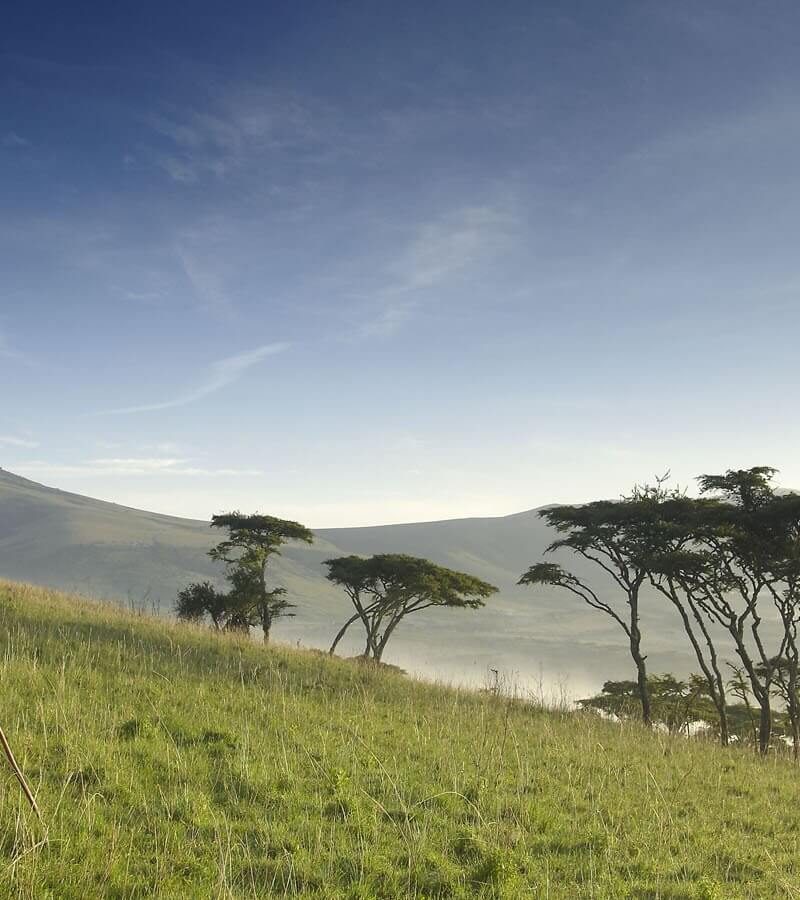
Olduvai gorge
One of the most important paleontological sites in the world, Oduvai Gorge has preserved evidence of early people living there as long as 1.9 million years ago. The Olduvai Gorge Museum, often known as the “cradle of mankind,” is a museum that displays ancient stone tools and fossilized human bones. It is situated approximately midway between the Serengeti and the Ngorongoro Crater. The museum is 30 miles (50 km) long and 290 feet (90 meters) deep.
The Ngororngoro crater
One of Tanzania’s most attractive attractions is this UNESCO World Heritage Site. The crater is home to more kinds of fauna per square kilometer than any other intact caldera in the world. The size of Tanzania’s crown jewel is 260 square kilometers, with a 20-kilometer diameter and a 610-meter depth. Over 25,000 creatures live in the crater, including herds of large mammals like elephants, buffaloes, elands, wildebeests, zebras, gazelles, hippos, and rhinos as well as carnivores like lions, hyenas, jackals, and cheetahs.
Numerous aquatic birds, including flamingos and pelicans, can be found in the ponds or tiny lakes on the crater floor. The woodlands surrounding the crater rim, which are separate from the crater floor, are home to leopards, reedbuck, warthogs, and forest birds, making it Africa’s top spot to observe the “Big Five” (lion, elephant, rhino, leopard and buffalo).
Empakai crater
Untouched by people and little seen, a magnificent destination can be found tucked away in a remote area of the Ngorongoro highlands in the east. While strolling down the forested hills to the lake beach below a birder’s paradise, experience, discover, and explore the Empakaai Crater. An experience apart from the masses is made possible by the journey to the crater floor.
Drive up to the crater rim and descend to the floor. The bulk of the crater floor is covered by a lovely lake, making it an excellent spot to stop and unwind while enjoying a picnic lunch. It’s common to observe flamingos on the lake’s shallow waters. The birdlife in this region is fantastic, and animals does pass through this area, so it’s crucial that you are with your safari guide. Make your way back up the wooded hills to the car after lunch so you may drive to your accommodation.
Olmoti crater
One of four volcanic craters in the Ngorongoro Highlands is Olmoti Crater. Although less impressive than Empakaai Crater and Ngorongoro Crater, Olmoti is the perfect location for off-the-beaten-path walking safaris. The grassy vegetation that cover its caldera floor draw grazing animals like reedbuck, eland, buffalo, and bushbuck. The so-called Munge waterfalls, a water cascade that plunges hundreds of meters into a deep ravine to form Munge River, are another attraction in Olmoti Crater in addition to the abundance of birds and the variety of vegetation.
The average duration of a walking tour to the crater rim is three hours, and a ranger with a weapon is always present. There are also longer, full-day hikes along the crater rim. Anytime of the year is a good time to visit Olmoti, but the drier months of July to December, when the roads are more supple, are recommended.
Kerimasi crater
It is one of the older volcanoes in the Ngorongoro Conservation Area and a component of the huge east African rift valley. Many choose to include the nearby Olmoti and Empakaai craters, as well as Oldoinyo Lengai, on a lengthier walk that also includes the Kerimasi crater and ends as far north as Lake Natron. Although it is always possible to go hiking, it is more pleasant to do so in the dry seasons. Every year, this occurs from July through January, however there may be brief downpours in December.
Laetoli footprints
The Laetoli Footprints are the world’s oldest prehistoric human footprints that have been discovered. 25 miles southwest of Olduvai Gorge, in the Conservation Area, is the location of Laetoli. Two early hominid ancestors through wet volcanic ash in Laetoli around 3.6 million years ago. The oldest footprints of early humans were covered and preserved when the adjacent volcano erupted again.
Australopithecus afarensis, an upright-walking hominid, is thought to have left three distinct tracks in the Laetoli Footprints. About 70 prehistoric human footprint impressions can be seen throughout the nearly 27-meter-long footprint track. The Olduvai Museum features replicas of these footprints.
Lake Ndutu & Lake Masek
On the western edge of Ngorongoro Conservation Area, Lake Ndutu and Lake Masek are near the border of Serengeti National Park. Water collects in small basins between the two lakes from surrounding, slightly higher altitude locations. Both lakes’ water is quite salty, and the majority of it evaporates during the dry season.
The area around the lakes serves as a staging location and point of departure for the migration because it is surrounded by short-grass plains and forests, which offer plenty of cover and food.
Ndutu is ideally located in the middle of the southern plains, offering typically the best animal viewing during the green season, despite the local region being covered with a forest of acacia trees. Many eminent writers, filmmakers, and wildlife biologists have made Ndutu their preferred vacation spot since it is the hub of the migration from December to April.
Lake Magadi
A 7 square mile (18 km2) alkaline crater lake, Lake Magadi is part of the Ngorongoro Conservation Area. Thousands of lesser flamingos frequently live there, and it receives its water from a creek that empties Olmoti crater in the north as well as from rainfall. Witness the amazing sight of tens of thousands of pink flamingos posing for photos and reflected in the quiet waters. Along the shoreline, a variety of creatures can be seen, including lions, elands, and rhinos. Additionally, the shoreline is a fantastic location to see golden jackals, which frequently hunt flamingos.
Gol Mountains
In the far northern section of the Ngorongoro Conservation Area are the Gol Mountains. One of the area’s earliest geological formations, these mountains comprise a collection of ridges. They were created millions of years before Ngorongoro Crater, rising to a height of 915m from the wide short-grass plains.
The scenery is ancient, and the landscape is breathtaking. The broad flowing valleys are dominated by enormous mountains, canyons, and amazing rock formations.
They grow lush, green, and flower-filled in the rain. Beautiful, large trees offer the game an umbrella of shade. The area appears mysterious and enchanted because to the mountains’ ability to hold onto rain, the creation of storm clouds, and the extraordinary light.
Things to do in Ngorongoro
The most well-known park and premier safari destination is the Ngorongoro. The Ngorongoro has a lot to offer, including the Big Five, the greatest crater with full of life in the world, and breathtaking vistas. These are the top sights and activities to enjoy while visiting Ngorongoro crater
Explore wonders
The walking Safari
In Ngorongoro, walking is a fantastic way to get close to nature. Walking safaris are not available in the Ngorongoro crater but can be done anywhere outside the crater. Take in the culture and nature around you. Discover the magnificence that Ngorongoro Conservation Area has to offer while enjoying peace and isolation. the animals at Empakaai Crater Lake, the active volcano Oldoinyo Lengai, and the breathtaking views of the vibrant Lake Natron.
The Embulmbul Depression near the rim of Ngorongoro, Nainokanoka settlement, Empakaai crater, Olmoti crater, Kamnana, Naiyobi Maasai hamlet, Mounwongoni, and ultimately Oldoinyo lengai are among the best locations for walking in Ngorongoro.
The Baloon Safari
In the Ngorongoro region, a balloon safari offers a special balloon flight that takes passengers through the human ancestry to the plains where the famed wildebeest migration starts. In many areas of Ngorongoro, ballooning is available. During the Dry Season, it is particularly popular at Ndutu and close to Oldupai Gorge.
A long-standing ballooning custom rewards you with a glass of sparkling champagne breakfast and a certificate after landing. Depending on your landing point, the breakfast spot is put up in a different area every day.
NB: Due to the limited availability of these safaris, we kindly request that you make your reservation as soon as possible.
Bush camping & bush meal
Campsites are plentiful throughout the Ngorongoro and frequently fill up during high season. Camping is easy and comfortable, bringing you close to nature and wildlife for a true sense of the Serengeti wilderness. Sleeping in a tent between you and herbivorous animals that are roaming through camps, lions that are rising and howling at night, hyenas that are stealing your shoes, and night campfires can be a thrilling and enjoyable experience.
Bush camps can be rudimentary with long drop toilets, spotty hot water, and cooking over an open flame, or they can be luxurious with a pool, WiFi, hot showers, a bar, and a restaurant.
Game drive
Depending on the activity you choose, Ngorongoro can be explored in 1 to 3 days despite its enormous size, difficult roads, and isolated location. Since most animals are active in the early, particularly during the dry season, morning game drives are the most rewarding. In the morning, there are many birds, and other creatures can be seen soaking up the sun. Since most animals seek shelter in the afternoon, afternoon game drives typically aren’t as rewarding as morning ones. There are populations of predators, herbivores, birds, and reptiles in the area.
Bird watching
In Ngorongoro, there are more than 500 different kinds of birds. Between September and April, the Ngorongoro Crater is home to the yearly migrants from Europe and Asia. Lesser Kestrel, European Swallow, Eurasian Bee Eater, Northern Wheatear, European Roller, Pallid Harrier, Caspian Lapwing, and Montagu’s Harrier are some of the migrant birds found in this area. Also visible during the wet season are big flocks of European storks and the Rosy-breasted Long claw.
Ostriches, Kori bustards, Secretary birds, Grey crowned Cranes, the ground-nesting Northern Anteater Chat, Rufous-napped Larks, Capped Wheaters, Fischer’s Sparrow Larks, Red capped Larks, and Grassland Pipits all have nests on the bare ground or sand pathways in the Ngorongoro Crater. The African White-backed Vulture, Rufous-tailed Weaver, and Superb Starling are the Ngorongoro Crater’s tree nesting birds. Inhabitants of the Ngorongoro Crater include raptors like the Long-crested Eagle and the Augur Buzzard.
Thousands of flamingos and other water birds including ducks, waders, and herons breed in the soda lakes of Ngorongoro.
Since it is the breeding season, November to April are the greatest months to see birds.
Calving season
Every year, the wildebeest calf’s well-timed birthing season falls in January, February, and March. Around this season, 80% of wildebeests give birth to thousands of calves, sometimes as many as 8000 in a single day! The newer, greener grass gives the newborn calves more energy, enabling them to take their first, wobbly steps just minutes after birth.
The Southern Serengeti and Western Ngorongoro host the highest number of predators on Earth during the calving season. As lion, cheetah, and leopard cubs master the art of hunting, observe nature’s truth unfolding in rapid succession. Strong raptors, jackals, and hyenas all contribute to the kill.
Zebras and gazelles join in, taking advantage of the peak calving period in February and continuing into March to give birth to their young.
Photographic & Filming Safaris
The majority of these safaris are designed and appropriate for photographers and filmmakers. A photographic safari, in contrast to other safaris, gives you access to the best viewing locations, a professional, knowledgeable, flexible, and well-trained guide, a private open/closed 4X4 vehicle with a maximum of 4 people, charging ports, enough space, and top accommodations and facilities, enabling you to take exceptional pictures of scenery, people, and elusive wildlife in their natural habitat.
The dry season, when there are many animals, and the calving season, are the best times for photography and video safaris (see the migration and calving details)
NB: Due to the limited availability of these safaris, we kindly request that you make your reservation as soon as possible.
Honeymoon Safaris
A honeymoon safari has a lot to offer couples seeking for that extra-special experience. Ngorongoro offers it all, whether you’re drawn to it by the scenery, the breathtaking natural surroundings, or the colorful culture. You may combine these lovely hotels with first-rate service to create the ideal honeymoon getaway. You can add as little or as much as you’d like because it’s your honeymoon. With the help of our amiable and knowledgeable local guides, we’ll assist you in exploring these huge, stunning plains.
The abundance of information about the year-round availability of honeymoon safaris can be daunting.
NB: To make the process simpler and give you a general idea of what to think about when planning your honeymoon, we advise speaking with your tour operator.
The Ngorongoro Safari tours
Contact us Today!
“We are available 24/7.”
 BOOK WITH CONFIDENCE
BOOK WITH CONFIDENCE